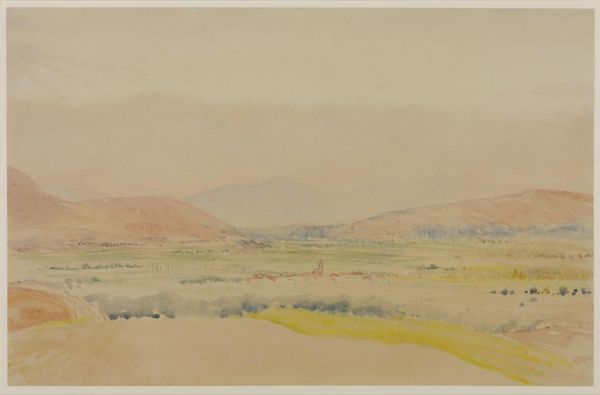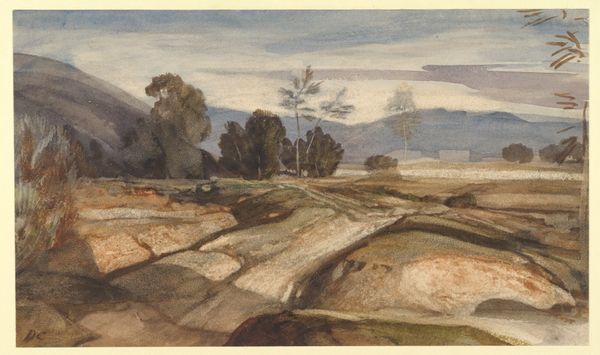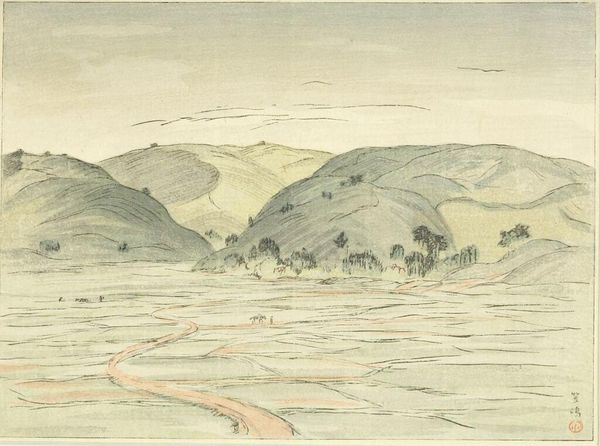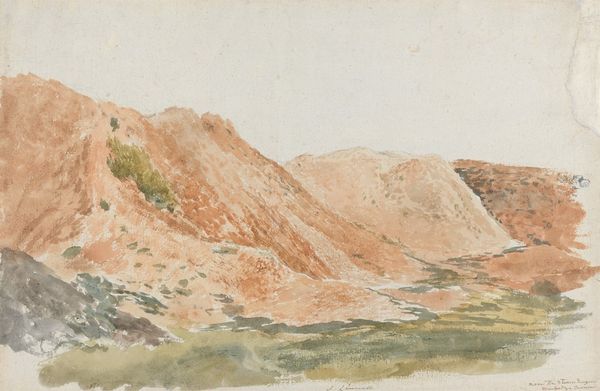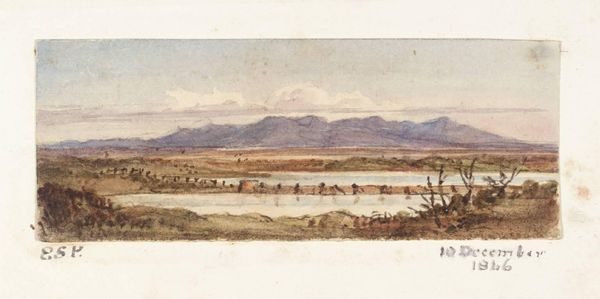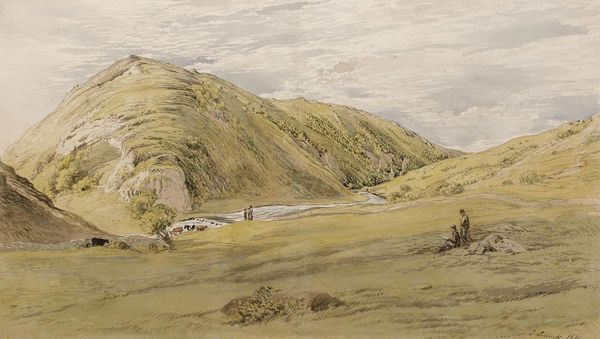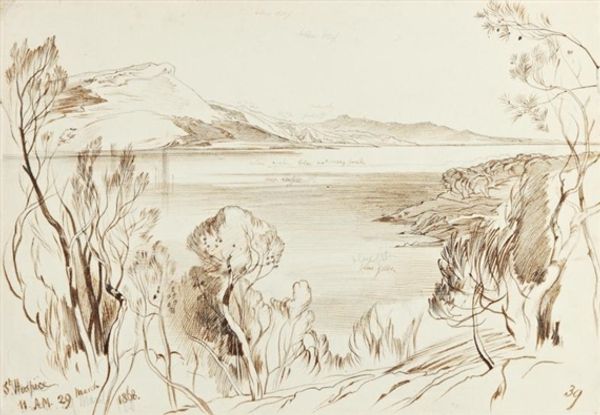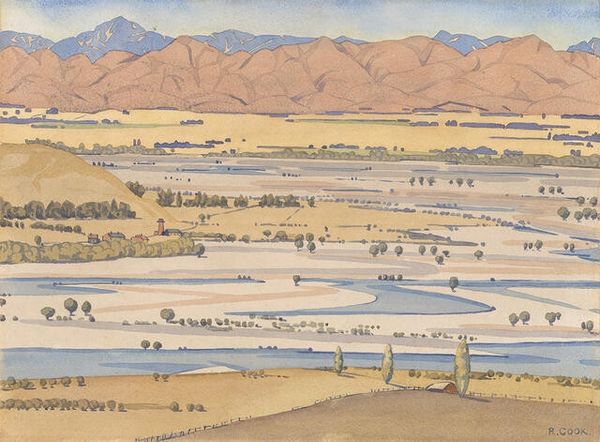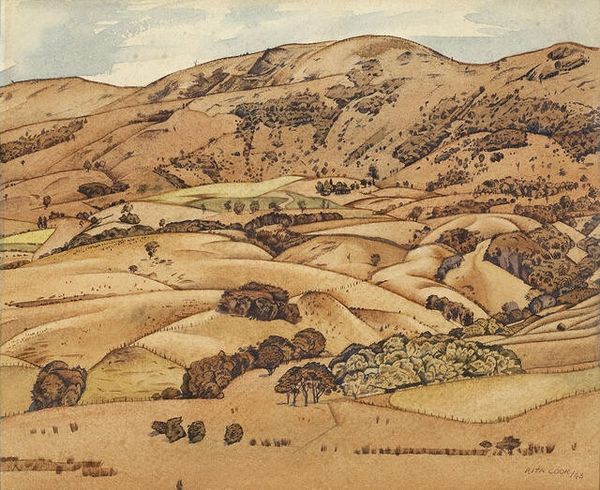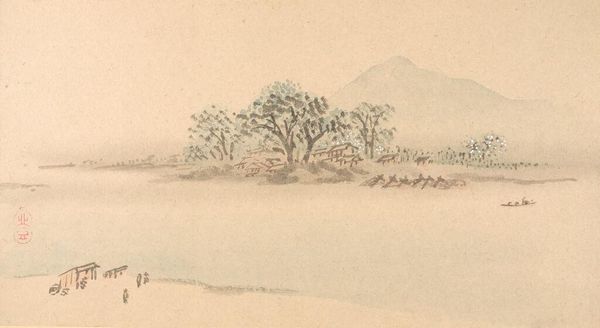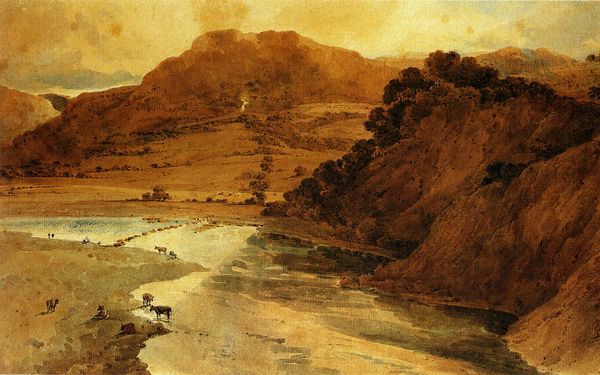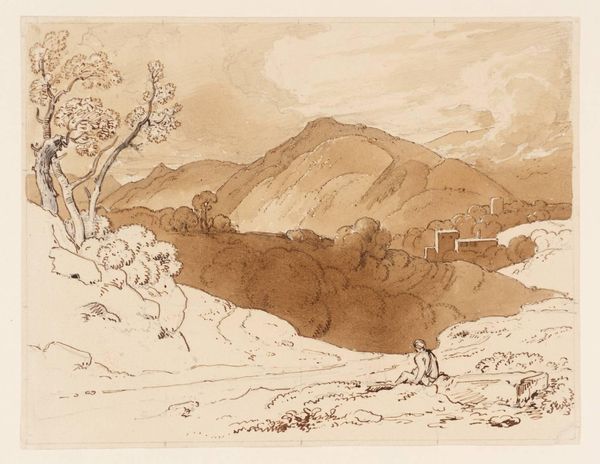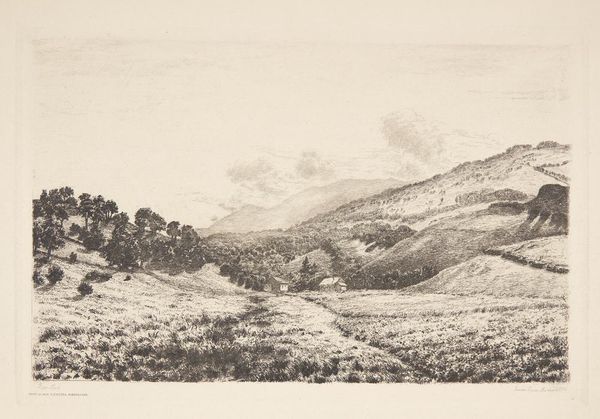
painting, watercolor
#
painting
#
landscape
#
oil painting
#
watercolor
#
modernism
#
realism
Copyright: Rita Angus,Fair Use
Curator: At first glance, it’s peaceful. It evokes a certain quiet solitude, almost stark in its simplicity. Editor: Indeed. We are looking at "Wainui," a 1943 painting by Rita Angus, a prominent figure in New Zealand modernism. It’s currently housed at the Christchurch Art Gallery. What's striking about this watercolor and oil on paper rendering is the duality, how the tranquil, agrarian foreground sharply contrasts with the rolling hills in the distance. Curator: I immediately fixate on that layering; the eye travels over these serene haystacks, the calm body of water, and onward towards the undulating hills. There’s a profound sense of depth, emphasized, almost framed, by the heavy, overcast sky. This separation also makes the landscape look so empty, devoid of people... but abundant in shape and form. Editor: I wonder how that very feeling might reflect wartime anxiety? Completed in 1943, “Wainui” emerged during a period of considerable upheaval. Angus, like many artists during wartime, was concerned with place and identity, a turning homeward amidst global uncertainty. She made it her business to create these iconic, simplified landscapes. The abstraction isn’t simply about form; it's imbued with feeling, this need to find solidity and simplicity in the landscape of the homeland when the world feels anything but stable. Curator: Looking at it now through that lens, I perceive a more complex image, seeing symbols rather than simple realism. Even the subdued color palette carries emotional weight, lending it a melancholic yet grounding tone. Editor: And her decision to split the composition so distinctly between the earthly and the airy reflects a larger theme, too. A visual manifestation of humankind’s imprint versus nature's ancient claim on our psyche. Ultimately it's a call to reflect upon our position in the grand, unwavering narrative of the natural world. Curator: Precisely! Something that at first appeared placid now pulses with layers of human concern and coded visual markers. Editor: It reminds me of art's public function, it asks to freeze our gaze on what a culture collectively values during these uncertain times.
Comments
No comments
Be the first to comment and join the conversation on the ultimate creative platform.
